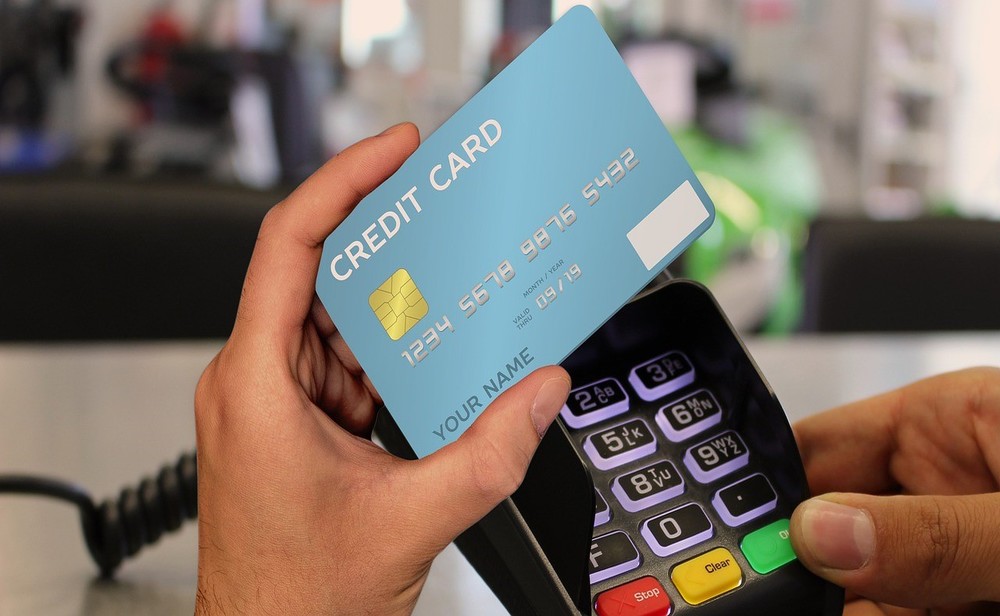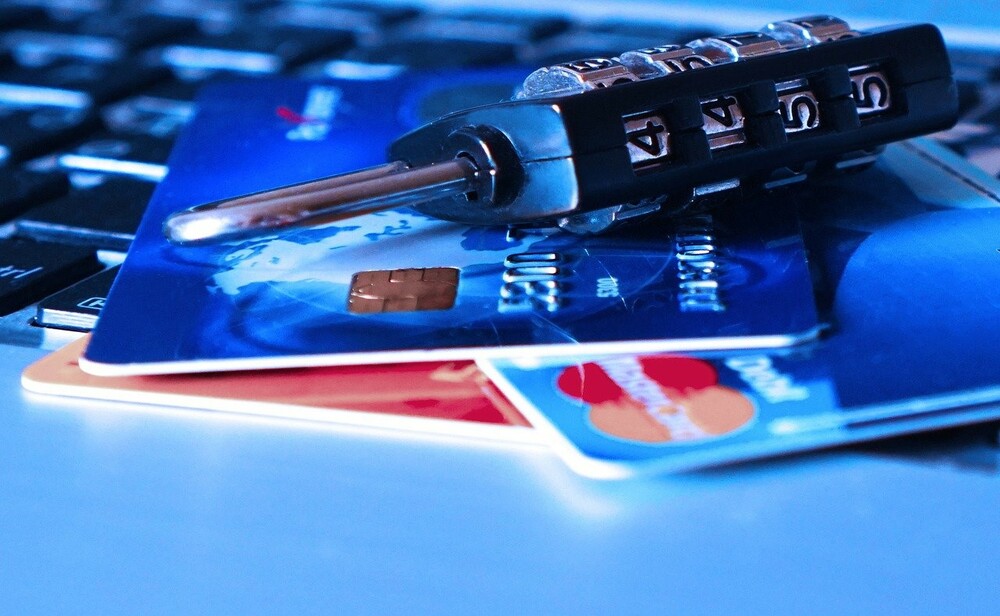DIY Credit Repair: 7 Steps to Improving Your Credit Score on Your Own
Credit scores are more useful because they account for the extent to which your credit is managed. Credit scores show how you manage and control your credit. We will use credit scores and explain how to improve your credit score to better your finances and credit management. There are two main credit score types, FICO and Vantage Score, each assigned to a specific score range. The FICO score ranges from 300 to 850, while Vantage Score ranges from 300 to 850. Credit scores are generated by credit bureaus, such as Experian and Equifax.
Here is a quick explanation of the DIY Credit Repair Steps required to increase the credit score.

Applying for Credit
When you apply for credit, you are trying to demonstrate to a credit reporting agency or financial institution that you have the financial capacity to pay back your debt. When you apply for credit, the company or institution that is going to issue you the credit requires you to fill in an application form with all your financial information. They also request supporting documents which include the following:
- Your photo ID
- The copy of your utility bill with your name, address, and contact number on it
- A recent pay stub (with your name and address)
- Your copy of last year’s tax returns (if you are a taxpayer)
- The copy of a contract that your employer has signed if they are going to give you a credit card
- Your bank statement shows that you have not borrowed any money from the bank
- Your credit card statement shows that you have not borrowed money from the bank
Documentation from other institutions such as a phone bill showing that you have not borrowed any money from the phone company. Financial Institutions will check your credit report to make sure that they approve the application. In some cases, financial institutions will reject your application. The reason why they may reject your application is either:
- If you already have a credit score.
- If you are applying for a new line of credit.
- If the minimum credit score for the product you are applying for is 45 or higher.
- If you are applying for a higher-balance line of credit.
- In the case of a higher balance line of credit, there is a big chance that your credit score would be affected.
In the case of a new line of credit, there is a bigger chance that you would be rejected. The reason is that the credit limit for the line of credit that you are applying for will be based on your existing credit score. If your credit score is not that good, the application for that higher-balance line of credit might be rejected. In other cases, you might be asked to provide certain documents to receive approval for the new credit line.
What Is Credit Score?
Your credit score consists of a variety of credit data collected by different credit bureaus and credit reporting agencies. Credit bureaus and reporting agencies usually charge a fee to compile this information and report it to credit bureaus. Your credit score ranges from 300 to 850. The higher your score is, the more attractive it is to lenders. However, lower scores are seen as risky and are not considered for loans.
How To Improve Credit Score?
There are many ways for improving your credit score. But we are discussing only 7 essential steps for improving your credit score on your own. These 7 DIY Steps are explained below:
1. Take Care of Your Credit Report
Every credit bureau that is tracking your credit report has a set of guidelines for your credit report. According to FICO, these guidelines are as follows:
- Limit the total number of new inquiries, except in exceptional circumstances.
- No inquiries should exceed 30 per month.
- Every inquiry should be from companies that you are familiar with.
- At least two inquiries per year should be from companies that you do not know or are not familiar with.
- The limit of inquiries cannot be raised for a particular period.
- Provide proper contact information to make them easier to track.
- Make sure that the information that is provided by the credit bureau is complete and accurate.
- No queries should be made to the credit bureau if they are not in your favor.
When you take care of the credit report, it will raise your credit score. You can take action to improve your credit score by filing an application with the credit bureau for a free credit report. By doing so, you will have access to the details of your credit report that were previously unavailable. You can also review your credit report periodically.
However, in the case of a dispute on your credit report, the credit bureau may consider it as a “negative item”. In this case, the credit bureau will take no action in resolving the dispute. This means that the credit bureau will report the “negative item” on your credit report. You can then request that it be removed from your credit report. Reviewing your credit report can also be beneficial if you find that you have inaccurate information in your credit report.
2. Open A Credit Account
Before you open a credit account, you should take the following steps to improve your credit score:
- Have you paid off your credit card in full?
- Have you secured a payment plan for your credit card?
- Have you applied for an auto loan?
- Have you secured a mortgage?
- Do you have any accounts with loans that are past due?
If the answer is “yes”, you should take action to improve your credit score.
How?
You can take action by opening a credit card account. With a credit card, you can:
- Save money on monthly payments.
- Use credit cards as a medium of payment.
- Open a loan to improve your credit score.
You should check your credit score as often as possible. Make sure that the feedback that you get is not misleading. If your credit score is more than 750, you should pay your credit card balance in full each month. This will ensure that you can earn interest on your credit balance.
Consider closing certain credit cards. For example, if you have several credit cards, you should close one of your credit cards. Set a budget and stick to it. Pay off your credit cards each month to avoid incurring interest on your credit balance. At this stage, you need to decide if you want to reduce your credit card balance, increase your credit limit, or spend more each month.
3. Track Your Credit Usage
One of the best ways to improve your credit score is to monitor the kind of credit you are using. For instance, if you are using credit cards for grocery shopping, home expenses, etc., and you cannot control your spending, you will incur a higher credit card balance. This will reduce your credit score because you cannot pay your credit card balance in full each month.
A better alternative to tracking your credit usage is to use a tool that will help you track your spending. This will allow you to pay your credit card balance in full each month. You will also be able to view your credit score, which will help you to improve your credit score.
4. Keep an Eye on Your Credit Score
Keep an eye on your credit score to make sure that the credit bureau does not report inaccurate information. You can check your credit score to see how your credit is doing. If you do not have access to a credit score, you can view your credit report. With a credit report, you will be able to view your credit score. Just as with the credit card account, you should make sure that you check your credit report every month.
If you need to check your credit report more often, you can download the report and keep it on your device. Keep an eye on your credit score to make sure that it remains consistent. One of the most common mistakes is failing to pay your credit card balance in full each month. Avoid carrying a balance and pay each month. This will ensure that you do not incur interest on your credit balance.
5. Pay Down Your Debt
At this stage, you should:
- Open a new credit card.
- Pay off your credit card balance in full each month.
- Use a balance transfer card to transfer your high-interest credit card balance to a 0% interest card.
- Use the credit card for your new goal.
For example, if your credit score is 800 or higher, you should choose the option of transferring your high-interest credit card balance to a 0% interest credit card. Some of the best credit cards that allow you to transfer your high-interest credit card balance to 0% interest are:
- Discover it® Card – this card offers a 0% interest rate on balance transfers for 21 months, a 0% balance transfer fee for transfers up to $15,000, and a 5% cashback reward.
- Discover it® Cash Back Card – this card offers 0% interest on balance transfers for 15 months, 0% balance transfer fee for transfers up to $3,000, and a 5% cashback reward.
- Marriott Vacations Credit Card – this card offers 0% interest on balance transfers for 15 months and a 0% balance transfer fee for transfers up to $20,000.
6. Get a Loan
If you have been unable to pay off your high-interest credit card balance and you need a loan to pay off your credit card balance, consider getting a personal loan. There are several personal loan companies available, like LendingClub, Prosper, and SoFi. Each of these loans is generally a short-term loan, with a fixed interest rate.
This means that the loan amount you receive is calculated by multiplying the interest rate and your credit score. A personal loan usually charges an interest rate of around 7% or 8%. This is an affordable loan to pay off your high-interest credit card balance.
7. Consider Using a Pay Day Loan
An additional option for reducing your credit card debt, which is generally considered to be more affordable, is to take out a payday loan. A payday loan is a loan that you take out each payday to pay off your credit card balance. Depending on your credit score, you will typically pay an APR between 48% and 56%.
This means that your loan payment will be greater than the original amount of your credit card balance. This will require you to make the minimum payment on your credit card each month to stay under the APRand , to not have your payday loan affect your credit score. The minimum payment on payday loans can range from $25 to $500 each month.
Conclusion
The good thing about credit is that there are plenty of ways to improve your credit score. However, this will not happen overnight. You will need to be consistent in paying down your credit card balance. But if you can follow these steps, you can manage to improve your credit score. Evaluate your credit score each month and avoid paying off your credit card balance in full each month.
As a final tip, it is important to remember that good credit is the foundation of your financial life. Good credit can help you qualify for the best mortgage rates, the best auto loans, and even the best credit card offers. When you follow these seven steps, you can learn how for improving your credit score.





